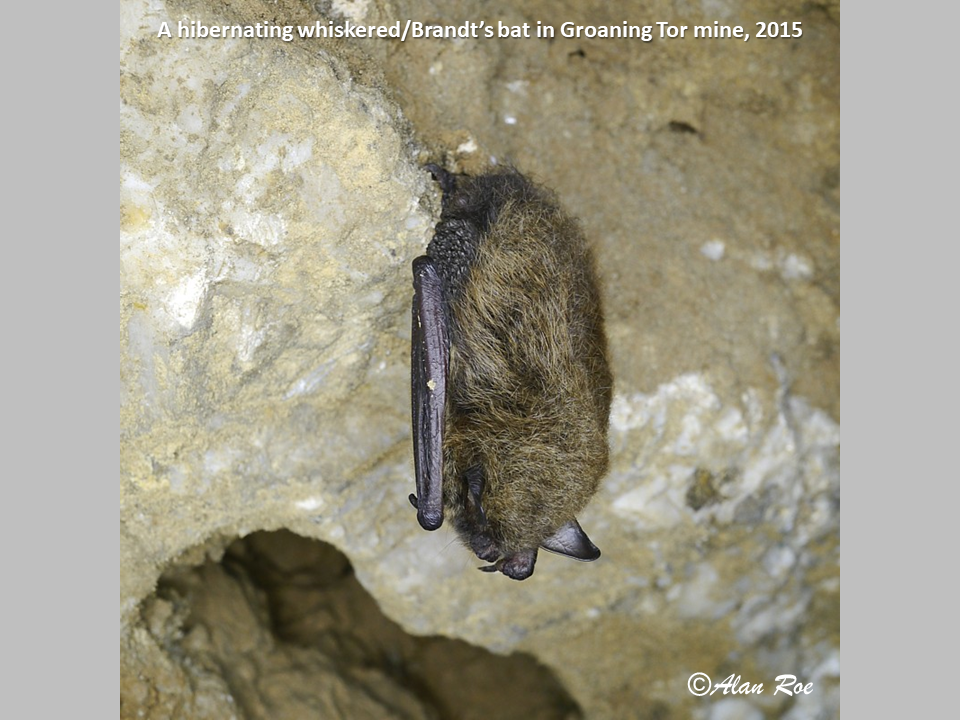Following BCT guidance and the IUCN risk assessment we were able to complete the National Bat Monitoring Programme hibernation surveys in the Via Gellia this year, having missed 2021 due to Covid. In February a team of three surveyors climbed the steep slopes of the valley to the two disused lead mine adits which are situated about 470 metres apart.
In Groaning Tor mine, which never holds large numbers, no bats were found. Water levels on the floor of the adit were significantly higher than usual. Eleven bats were located in Jacob’s Dream mine which is about the average number for this site. The total was made up of five whiskered/Brandt’s, two Natterer’s, two Daubenton’s and two Myotis bats which were so tightly squeezed into a deep crevice that certain identification was impossible.
We now have more-or-less continuous hibernation monitoring from these sites since 2004. Plotting the counts for all bat species using a five-year moving average shows that the Groaning Tor mine counts have gradually declined whilst those for Jacob’s Dream mine have held up well. Overall, the counts for the two sites combined are down slightly over the period.
When you consider the many dozens of adits in this valley, most of which hold hibernating bats when checked but which do not get regularly counted, it is apparent that the Via Gellia is of significant importance for overwintering bats, a fact recognised in the citation when the area was designated as a Site of Special Scientific Interest in 1991.
Alan Roe
Recorder
